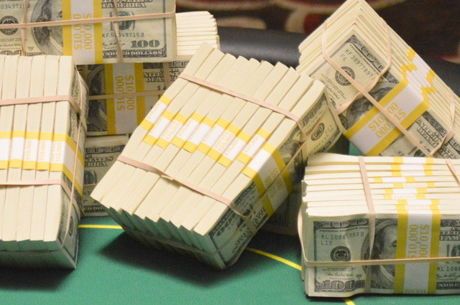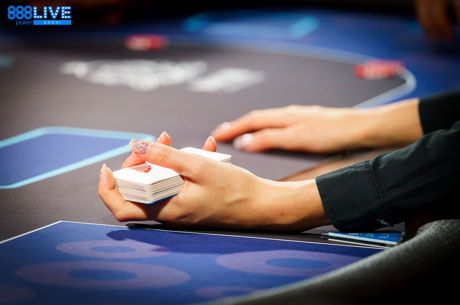Strategy Vault: Card Memory in the H.O.R.S.E. Stud Games

Digging deep into the PokerNews strategy archives can lead to a buried treasure, so we'll be unearthing a few gems for your viewing pleasure. For this edition of the Strategy Vault series, card memory in stud games is the topic discussed. Being able to improve upon this skill is a must for all H.O.R.S.E. games if one wants to continue to excel.
Stud games are often referred to as "old man" games, since it seems that the average age of any random player at a stud cash game table is much older than you normally see in poker nowadays. The younger generation of poker players all prefer to play action games such as no-limit hold'em and pot-limit Omaha. These flop games are generally easier to learn, allow for novices to get lucky in a way that doesn't exist in stud, and don't require as much in the way of focus or board-reading skill. It may take "a lifetime to master" hold'em, but it really does only take "a minute to learn."
Stud variants make up a whopping 60% of the typical H.O.R.S.E. rotation — razz, seven-card stud (high only) and seven-card stud eight-or-better are all stud variants of poker. Thus people who hope to become excellent mixed-game players need to branch out from the aggressive action-junkie philosophy that has come to rule the flop games in the last several years. That style of play will certainly help them in the two rounds of flop games, but it's a different set of skills that are required to crush the stud games. Paramount among those skills is card memory.
Card memory, in its simplest definition, is remembering what cards have already been exposed. In a typical hand of a stud-based game, before the first betting round has commenced, each player has the ability to see 10 exposed cards — the door card of each of the eight players at the table, plus his own two hole cards. Compare that with hold'em, where each player has seen only two cards (his own two hole cards). That means each player has five times as much information in stud-based games than he does in hold'em, but only if he's paying careful attention to the table and to the cards that are exposed.
That's the first rule of stud — always, always pay attention to what's happening at the table.
It's a good rule for hold'em, but it's even more important in stud. If some opponents fold while a player's attention is directed elsewhere, he's missed out on information and handicapped himself for the hand.
Knowing which cards are dead and out of play can make a huge difference in two respects: deciding whether to play the hand at all, and in determining how far to chase certain draws. For example, a flush draw in stud is not necessarily the same as a flush draw in hold'em. In hold'em, a flush draw is generally viewed as about 4.25-to-1 to come in on the next card, because it's never possible to know what cards opponents are holding. At most, a player will have seen six cards (the two in his own hand, plus three on the flop and one on the turn), leaving 46 unknown cards. Nine of those unknown cards are presumed to be the suit that will fill the flush. That makes the ratio of non-flush cards to flush cards 37-to-9, or just over 4-to-1.
In stud, by the time a player is four to a flush (assume for the sake of argument this happens on fifth street), that player will have seen his own five cards, plus three upcards of any opponent who has also made it to fifth street, plus upcards of everyone else dealt into the hand. At a full table, with one opponent on fifth street, that means fourteen cards have been exposed. If only four of those cards are of the suit that will make the player's flush, the odds of the flush coming on the next card are 29-to-9, or just over 3-to-1. On the other hand, if the player has been paying careful attention and has seen four other cards of his suit exposed in other players' hands, that means that there are only five remaining cards which make his flush, changing to the odds from 29-to-9 to 33-to-5, or about 6.5-to-1. Knowing this information could change what would otherwise have been at least a call into a fold.
Paying attention to exposed cards can also inform a player's decision on third street to continue with the hand or fold. For example a hand like (8♣8♥) / Q♥ loses most of its strength if another eight and one or two queens are already exposed. A hand like (7♣8♣) / 9♠, a marginal hand under the best of circumstances, is a clear fold if two or more tens or two or more clubs are already exposed. The hand does not have enough high-card value to play on that basis alone. With the chances of catching a flush or straight greatly reduced because those cards are already out, it becomes quite easy to toss the hand into the muck. However, if the player dealt this hand has not paid attention to what other cards are exposed, he may play this hand all the way to the river, costing himself a significant number of bets, chasing a slim draw that is unlikely to come in.
There's no easy way to learn how to memorize all the cards that have been exposed. Some players try to order them by rank, then by suit. Others just try to keep track of ranks, or just try to keep track of suits. While the latter are not ideal, as they don't keep track of all of the available information, something is better than nothing. The information is out there — finding a way to retain it will go a long way towards improving one's stud game. Poker is a game of incomplete information, but in stud, we can improve upon gathering as much information as possible in order to maximize our edge.
This article was originally published on Oct. 18, 2008.
Want to learn more about the different variants of H.O.R.S.E.? Check out the Poker Rules section here on PokerNews.
To stay on top of the poker world, follow us on Twitter and like us on Facebook.









